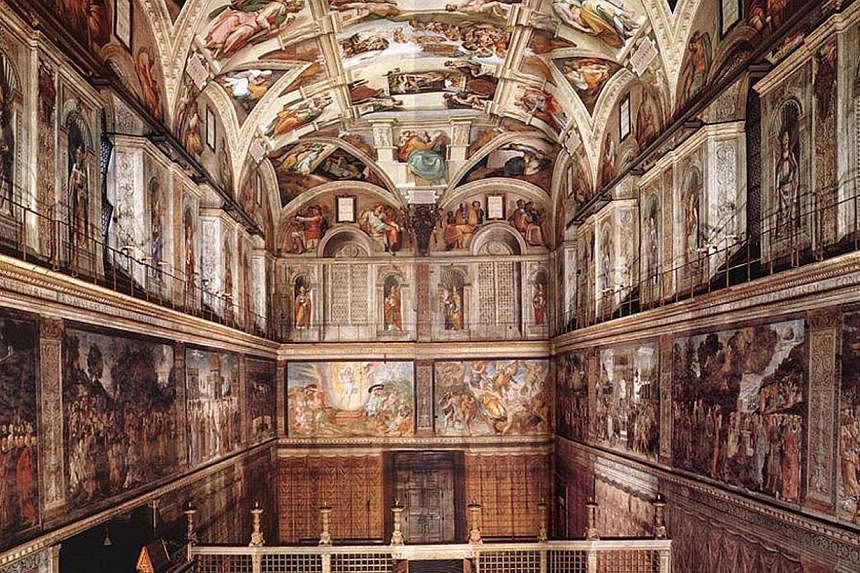VATICAN CITY (Reuters) - Dust, sweat and carbon dioxide brought into the Sistine Chapel by a swelling number of tourists risk damaging priceless Michelangelo frescoes, the Vatican said on Wednesday, hoping a new air conditioning and lighting system will protect them.
Some six million people a year visit the chapel, home to Michelangelo's famous ceiling frescoes - one of the wonders of Western civilisation that are over 500 years old.
The number of visitors to the chapel - where popes are elected in secret conclaves - can reach 20,000 a day in summer.
Their numbers have grown by 300 per cent from around 1.5 million a year in 1980, said Antonio Paolucci, head of the Vatican museums.
"Today, the Sistine Chapel risks being a victim of its own success," Paolucci, writing in the Vatican newspaper L'Osservatore Romano, said. "Six million visitors is an impressive number but objectively dangerous for the proper conservation of the frescoes. It produces a mix of dust brought in from outside, body sweat and carbon dioxide, which all end up on the surface of the frescoes and can in time harm them."
Work began on the new air conditioning and lighting system on Wednesday and should be in place by October.
Michelangelo's frescoes, inaugurated in October 1512 by Pope Julius II, underwent a major 14-year restoration that ended in 1994.
They include one of the most famous scenes in the history of art - the arm of a gentle bearded God reaching out to give life to Adam.
They also include the famous Last Judgement on the wall behind the altar, which the artist painted separately in 1535 and 1541.
Paolucci said the current system of air conditioning, de-humidification, dust removal, filtering and micro-climate controls was designed to handle far fewer visitors.
The Vatican did not say how much the new high-tech air conditioning system, devised by museum experts and the Carrier air conditioning company, or a new lighting system using the energy saving and heat-reducing LED (light-emitting diode) system, would cost but said they were being donated by the companies involved.
In recent years there have been calls for limits on the number of tourists allowed to enter the chapel. Paolucci has said that this might become necessary but he did not repeat that on Wednesday.
Under the current system, there is no cap on the number of visitors each day although there is a queueing system.

